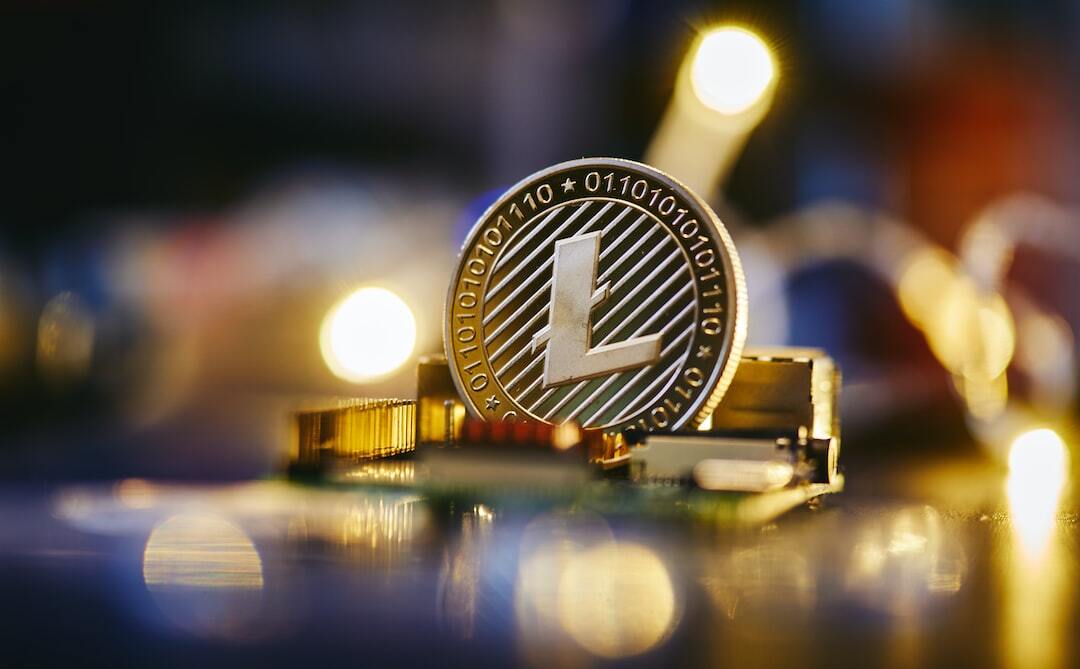Litecoin is a peer-to-peer payment alternative to Bitcoin, that has gained prominence and often named as the “silver to Bitcoin’s gold”. It developed to solve such problems Bitcoin faced like scalability or transaction speed. In this article you can learn all about Litecoin, the 21th on Coinmarketcap’s top crypto list by market capitalization.
The Creation of Litecoin
Litecoin is a peer-to-peer cryptocurrency created in 2011 by Charlie Lee, a former Google engineer, marking the creation of Litecoin. It was finally launched on October 13 in the same year, becoming known as the day litecoin launched. He later joined Coinbase, a cryptocurrency exchange as director of engineering in 2013.
Litecoin runs on an open-source blockchain that isn’t controlled by a central authority. Lee’s mission was to build on the foundations of Bitcoin blockchain (in fact, he did this by forking, or modifying the source code), but to make Litecoin suitable for daily transactions. In the words of Charlie Lee,
My vision is people would use Litecoin every day to buy things. It would just be the payment method of choice.

Interestingly, as he was often accused of posting his tweets about Litecoin for personal gain, he finally announced in December 2017 that he was selling and giving away all his LTC. The exchange rate at the time was hovering around the second highest in LTC’s history at $350.
Lee aimed for a fair launch, releasing LTC’s source making the code open-source a week before going live. He wanted to avoid the concentration of power in a few hands, thus aligning with BTC’s decentralized ethos. At launch, the reward for mining a Litecoin block was 50 LTC, which had negligible value back then. Despite aiming for fairness, Litecoin did have a small premine of 150 LTC to validate its genesis block.
What Sets Litecoin Apart from Bitcoin?
In this chapter, we will explain the difference between the world’s most famous cryptocurrency, Bitcoin and Litecoin.
Litecoin vs Bitcoin: Analyzing LTC’s Transaction Speed and Decentralization
Litecoin shares the foundations of blockchain-based P2P cryptocurrencies like Bitcoin, however they are different in several key areas so allowing Litecoin to break BTC’s limitations.
Litecoin was able to speed up its transaction rate on its cryptocurrency’s blockchain. While Bitcoin completes a block every 10 minutes (although this can vary greatly depending on traffic), Litecoin does this in 2.5 minutes. This means that it takes the blockchain that long to complete a transaction.
Supply Dynamics: How Litecoin Halving Affects LTC Price and Supply
Litecoin has a fixed supply cap of 84 million coins, in contrast to BTC’s 21 million. By issuing four times the number of coins, Litecoin aims to make smaller transactions easier, thus providing the opportunity for more practical everyday use.
Litecoin Mining, Segwit and the Lightning Network
Below we talk about how to mine Litecoin, what SegWit is and what we mean by Lightning Network.
Democratized Mine with Scrypt
Bitcoin employs the SHA-256 hashing algorithm for mining, which has led to the dominance of specialized ASIC devices (Application-Specific Integrated Circuit – specific computers optimized specifically for mining) in this activity. Unlike Bitcoin, Litecoin has adopted the Scrypt algorithm for mining, making the mining landscape more democratic and accessible to individuals using regular computers with the appropriate mining software. This decision aligns with LTC’s goal to provide a more decentralized cryptocurrency platform.
By choosing Scrypt, Litecoin has ensured that miners don’t need to invest in expensive, specialized hardware. Instead, they can use their regular computers to contribute to the network, processing new Litecoin transactions and adding them to a new block on the blockchain.
The Scrypt algorithm is more memory-intensive, which levels the playing field by reducing the advantage of ASICs. This way, more people can participate in the mining process, securing the network and validating transactions.
Early SegWit Adoption: Enhancing Litecoin Transaction Efficiency
Litecoin adopted SegWit well before Bitcoin integrated the update into its own protocol. SegWit was originally intended to solve BTC’s scalability problems back in the first months of 2017, yet Litecoin was the first to use it. The technology’s smooth performance on the Litecoin network subsequently boosted confidence in its utility, influencing its later acceptance and integration into Bitcoin.
In essence, SegWit optimizes block space by storing transaction signatures separately, allowing for more efficient use of the limited storage and processing space in each block. While its implementation in Litecoin was swiftly carried out, gaining traction in the Bitcoin network took a bit more time, although it eventually became a standard feature for both digital currencies.
Implementation of Lightning Network
Initially envisioned as a way to enhance BTC’s scalability, the Lightning Network adds an additional transaction layer atop a cryptocurrency’s main blockchain, facilitating rapid transactions at negligible costs. This supplementary layer is comprised of custom payment channels created by users. However, Litecoin was the first to practically implement Lightning Network, serving as a real-world testing ground for it.

Though the layer-2 scaling mechanism has its share of advocates and skeptics—critics argue it nudges users towards specialized wallets requiring the operation of individual nodes—it gained significant traction quickly on BTC’s network. In contrast, Litecoin’s adoption of the Lightning Network has been gradual. This is probably because its base layer already offers low transaction fees.
A landmark moment for both Bitcoin and LTC’s Lightning Networks came in 2017 with the successful execution of the first off-chain atomic swap between the two. According to LTC’s founder, Charlie Lee, this opens up the possibility for Litecoin to serve as an auxiliary entry point to the Lightning Network, particularly during times when BTC’s network is clogged and transaction fees soar.
Technological Advancements and Developments
Here we discuss the technologies behind Litecoin and future plans for innovation.
Technological Evolution
While Litecoin already offers many technological advantages over traditional cryptocurrencies, its commitment to innovation doesn’t stop there. The development team behind Litecoin is consistently working on new features and improvements.
One notable development is the exploration of MimbleWimble, an innovative protocol that promises enhanced privacy features for its users. By introducing this protocol, Litecoin aims to offer confidential transactions, enhancing security and anonymity for its users without compromising on transaction speed or efficiency.
Additionally, Litecoin is also looking into new forms of smart contract capabilities. While it doesn’t intend to compete directly with platforms like Ethereum, the integration of basic smart contract functionalities could enhance the utility and application scenarios for Litecoin in the future. This can allow for more complex transaction types, opening doors to decentralized applications (DApps) and more.
Lastly, the Litecoin Foundation has been actively co-working with academic institutions and research organizations to study and propose advanced cryptographic techniques. The goal is to bolster LTC’s security and make it resistant to potential future threats in the evolving landscape of quantum computing.
Litecoin Halving
On 2 August 2023, LTC’s 3rd halving took place, reducing the block validation reward to 6.25 LTC. The halving happens every 4 years or 8400000 blocks and the block reward for miners will be halved, aiming to curb inflation. Interestingly, with the 4-year cycle, the last one is expected to take place in 2142.
These events typically generate market volatility, so investors monitor it. We are in for an exciting few months, as after two previous halves, the LTC price has risen significantly: by 14200% after the first and 1574% after the second. However, keep in mind that within 1-2 years of these rallies, the price of Litecoin fell by 73% and then 83%, which significantly impacted LTC’s price and its market capitalization.
If you’re wondering when the next halving will happen, we suggest you look for a Litecoin halving countdown like this one.
Is Litecoin a Good Investment? – A Quick Overview About Litecoin’s Price
Litecoin can be used as an alternative cryptocurrency, continues to innovate and form partnerships with other platforms to enhance its usability and expand its adoption across the globe.
Litecoin has strong fundamentals and good prospects as a part of everyday transactions. Though not as volatile or as hyped as Bitcoin, Litecoin has shown steady growth and acceptance among retailers, fulfilling a different but complementary role in the cryptocurrency ecosystem. But cryptos have their downsides so when you decide to invest always be up to date with the market, do your research and only risk as much money as you can afford to lose!
How to Buy Litecoin?
Purchasing LTC has never been more accessible. Most leading cryptocurrency exchanges like Coinbase, Binance, and Kraken offer Litecoin among their available assets. If you’re new to cryptocurrencies:
- Choose a Reliable Exchange: Start by selecting a trusted exchange platform. Each platform will have its own registration and verification process.
- Secure a Wallet: While exchanges often provide their own wallets, it’s advisable to transfer your purchased LTC to a personal Litecoin wallet for added security.
- Complete the Purchase: Once registered, you can deposit fiat currency, then buy Litecoin. Make sure to review transaction fees and choose an appropriate time for your purchase.
Remember to do thorough research, as exchange offerings and fees may vary.
How to Sell Litecoin?
When you’re ready to cash out your LTC:
- Select an Exchange: Use platforms like Coinbase, Binance, or Kraken which allow selling Litecoin for fiat currency. Ensure the exchange you select supports withdrawals in your preferred fiat currency.
- Transfer Litecoin: Move your coin from your personal wallet to your selected exchange wallet.
- Initiate the Sale: Once transferred, you can sell your Litecoin for your desired fiat currency. After selling, you can withdraw the fiat currency to your bank or other preferred method.
Always be aware of transaction and withdrawal fees.
How to Store Litecoin?
Storing your Litecoin (LTC) securely is crucial to ensure the safety of your assets. Litecoin, like Bitcoin, can be stored in different ways. More information about the different wallets is available in this article.




